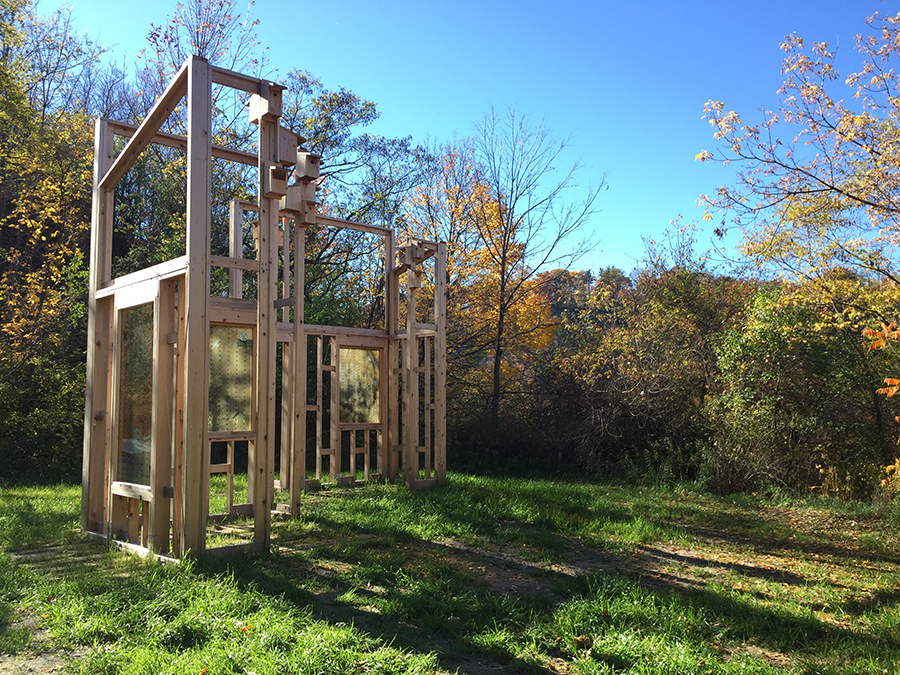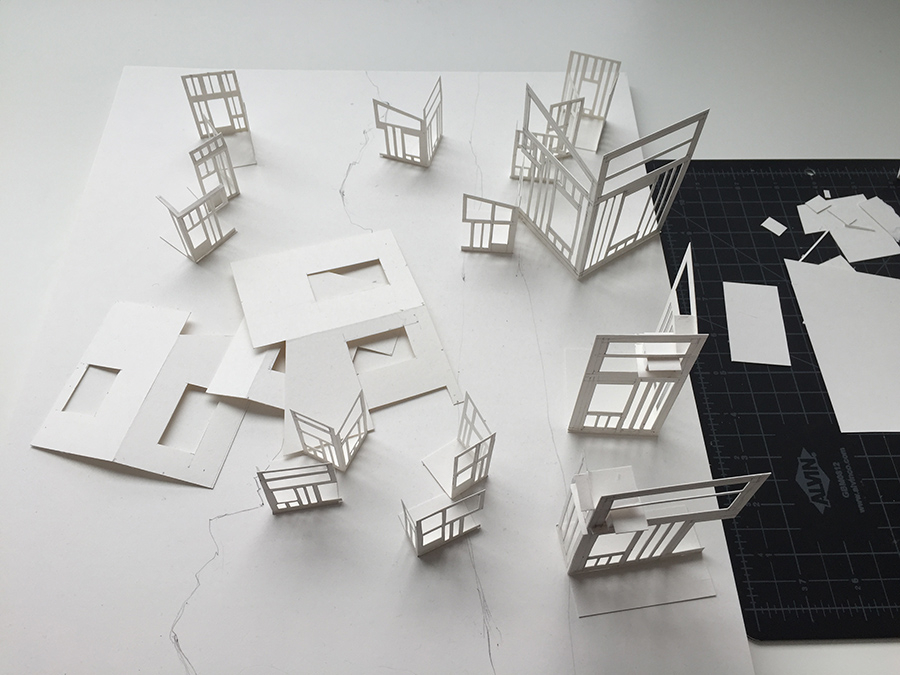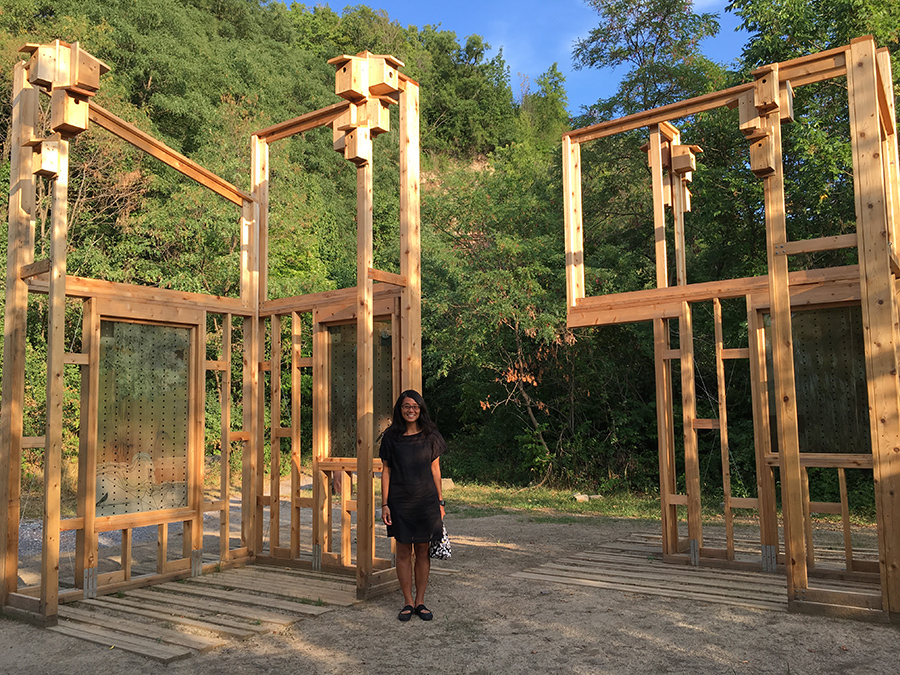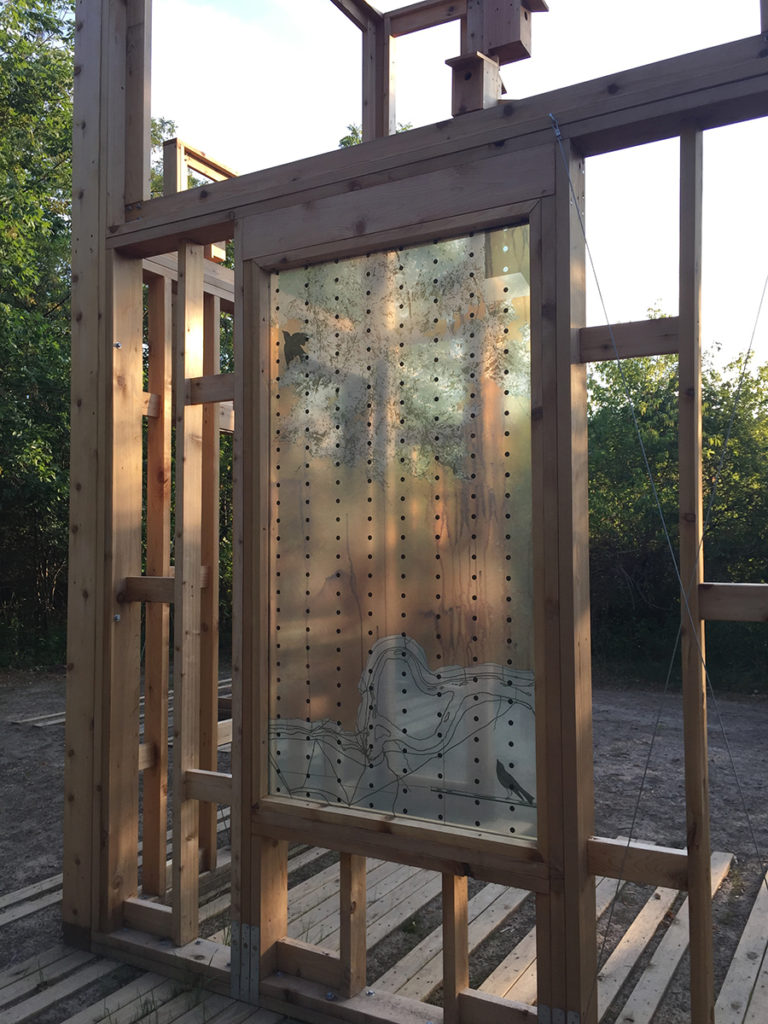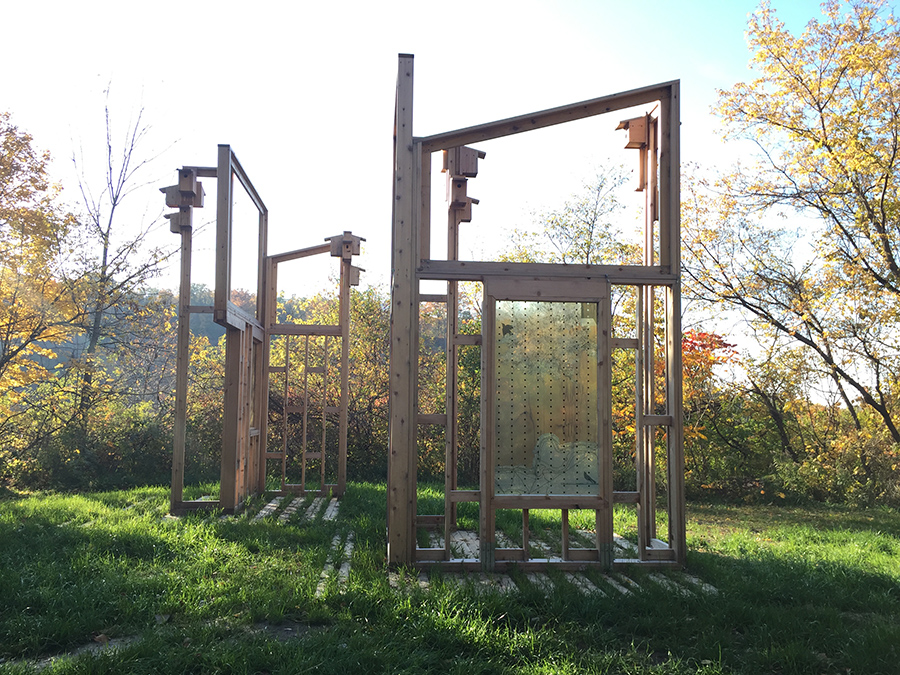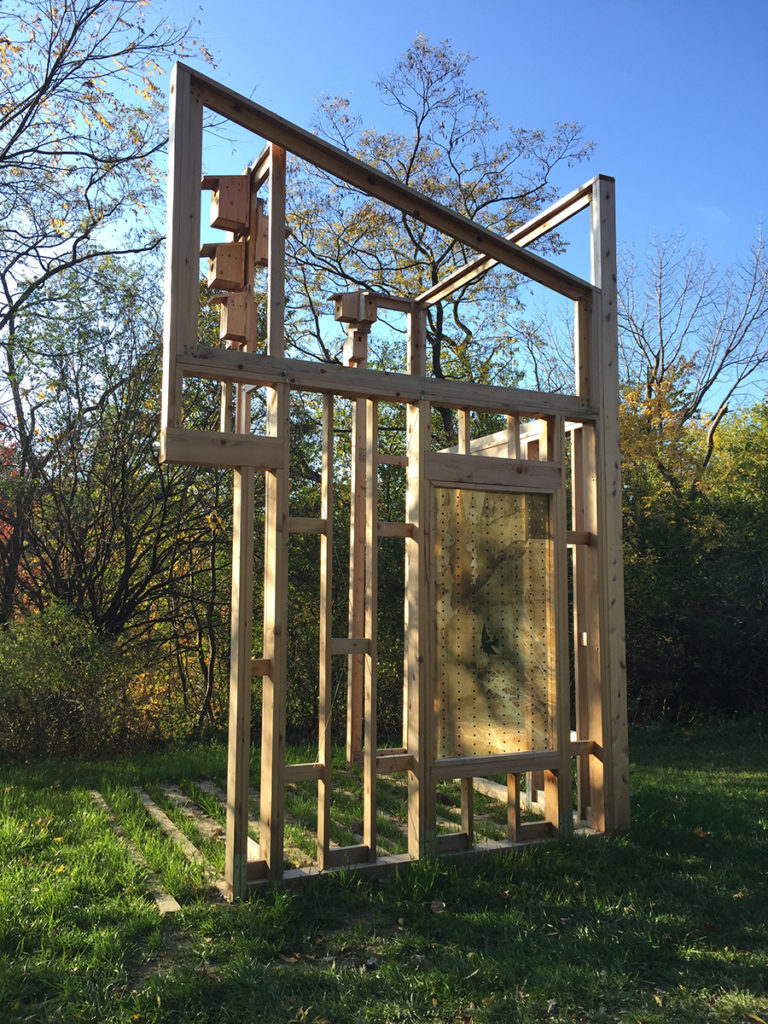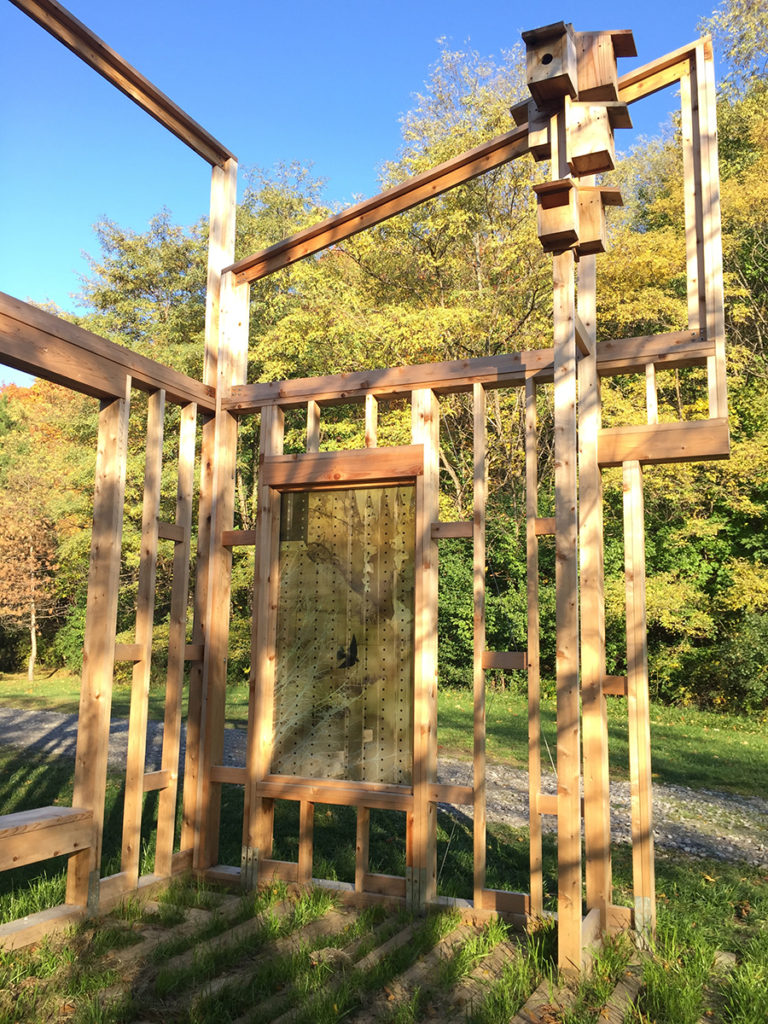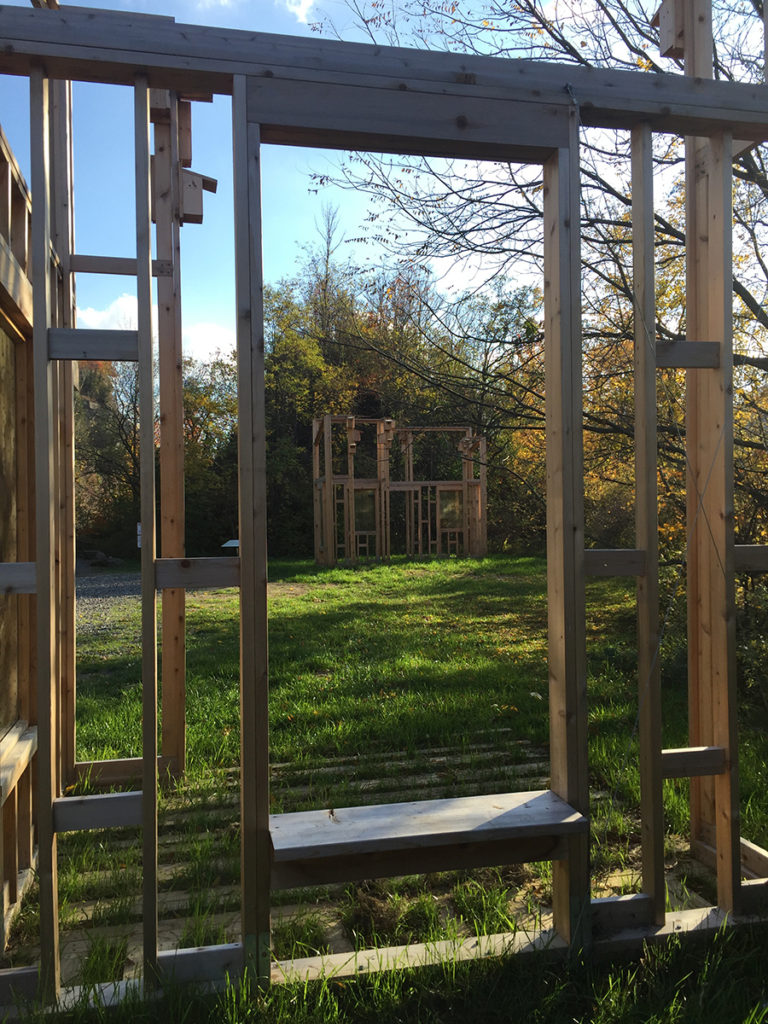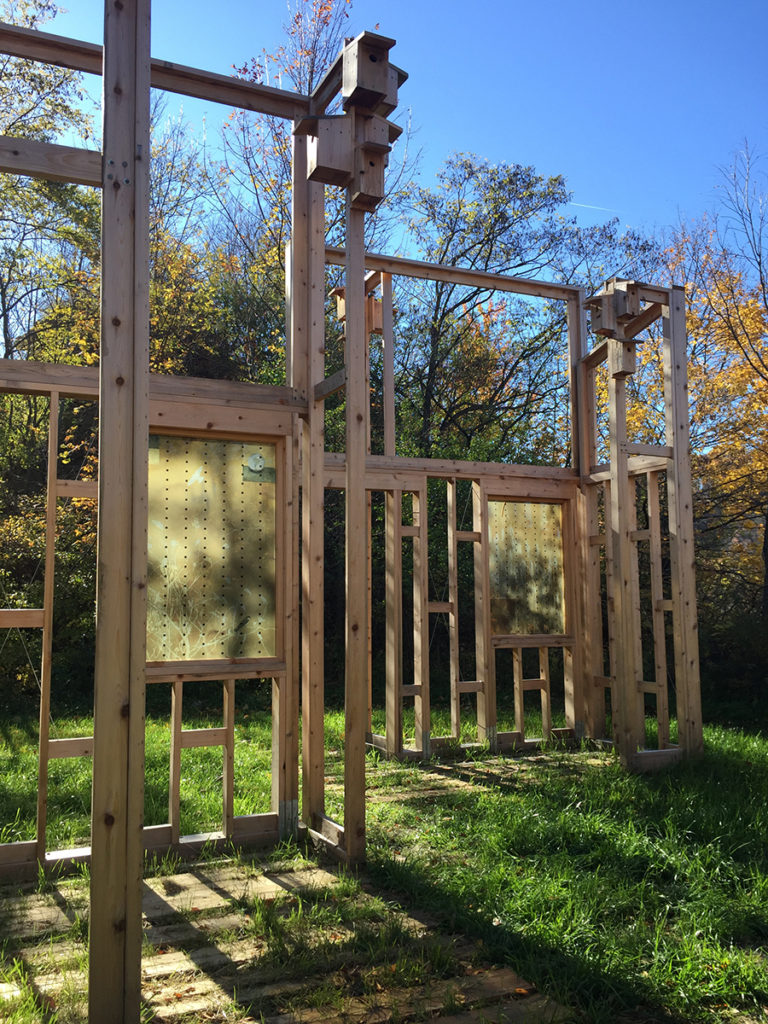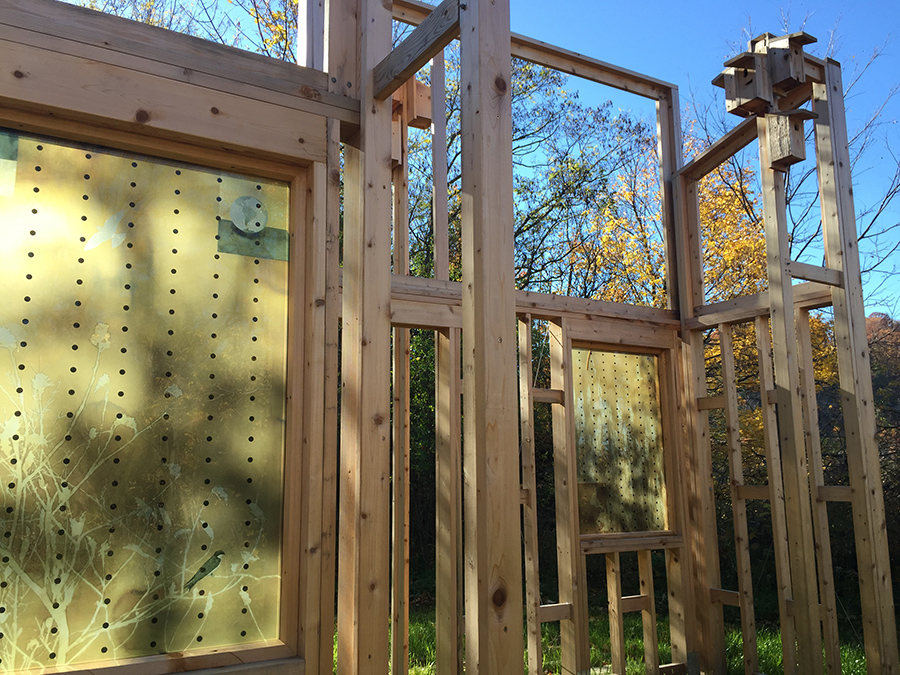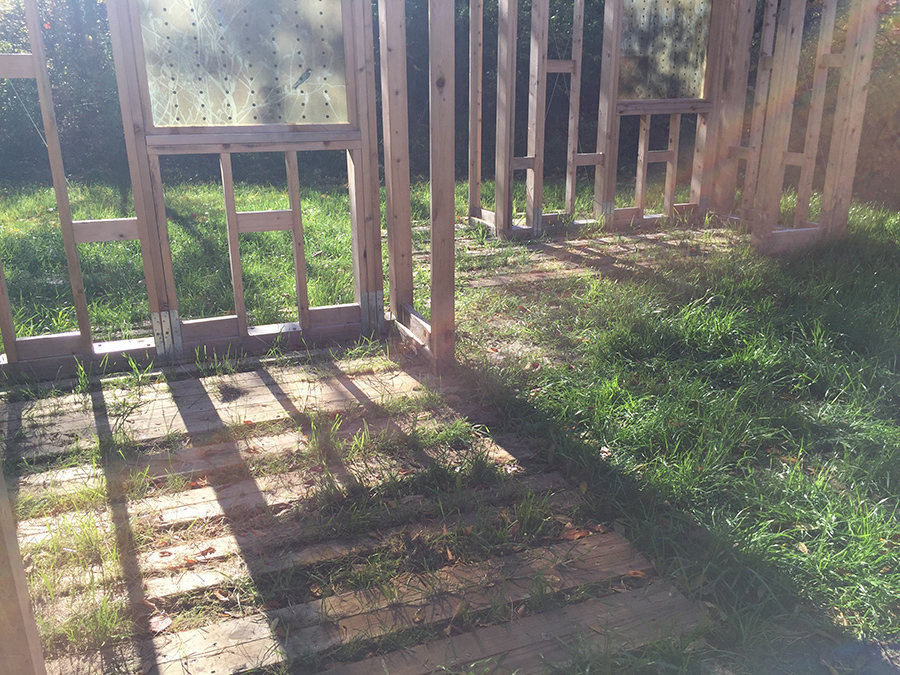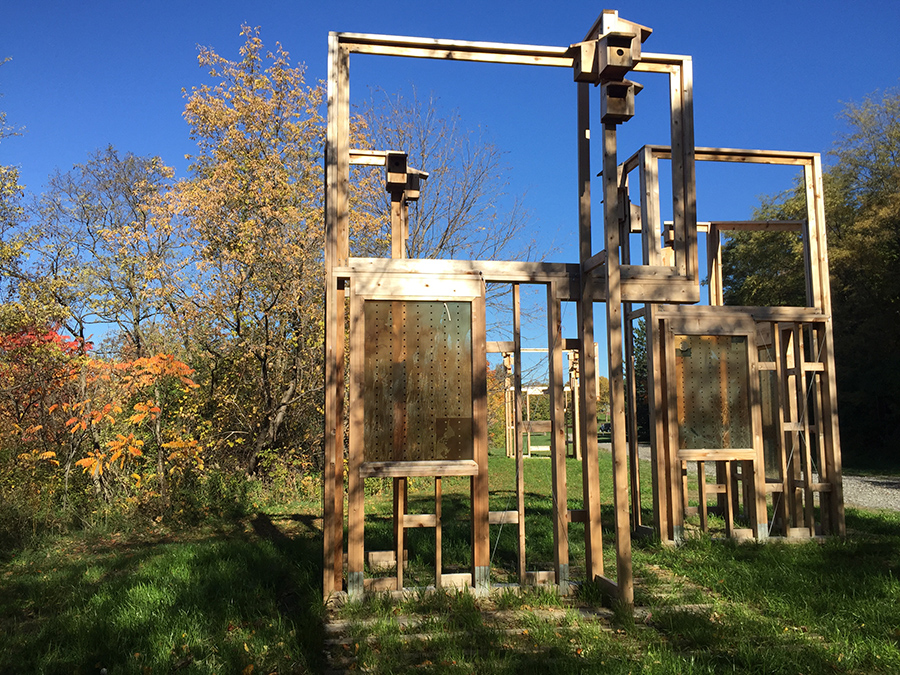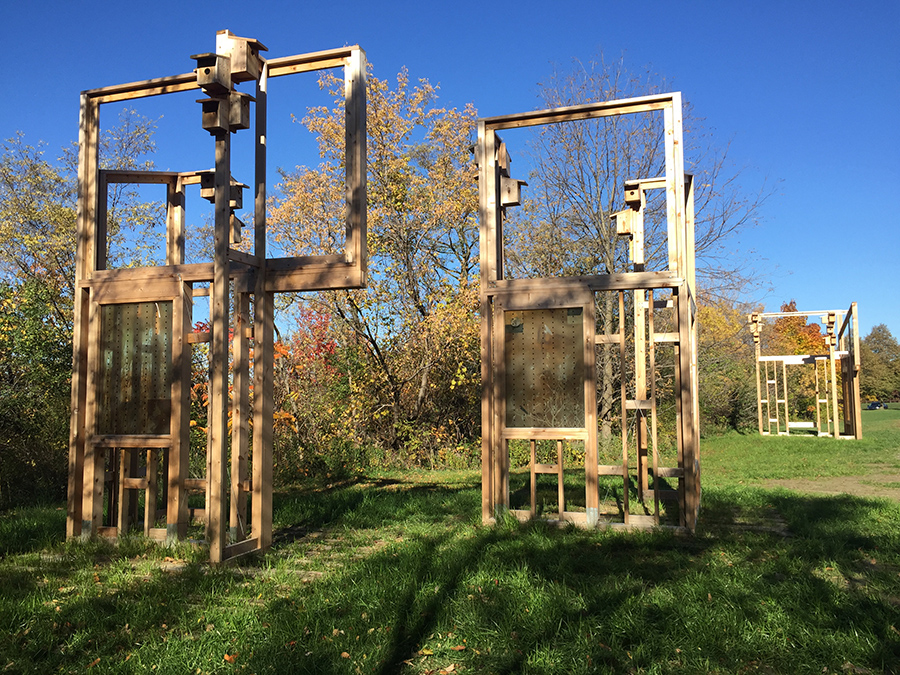2016 : ArtPark, Lewiston, NY
Commissioned by CALL/City as Living Laboratory and ArtPark. Project developed in partnership with Ellen Driscoll, and in collaboration with Matthew Hume; Construction assistants: John Costello, Olivia Arcara, John Wightman, Casey Hume; Structural consultant: Mark Bajorek, P.E.; Ecology consultants: Katharina Dittman, Ph.D, and Heather Williams. Glass fabrication by Moon Shadow Glass Inc. Many thanks to Olivia Georgia (CALL) for administering the process and Sonia Kozlova Clark and Tanis Winslow (ArtPark) for facilitating installation. And much gratitude to Mary Miss for her vision in collaboration and raising environmental awareness through the arts.
Bower is a series of interrelated architectural fragments, designed to promote awareness and interest in local bird species, as well as draw attention to the perils of bird-strike window collisions.
The fragments are structured using standard wood frame construction, and formed to evoke local vernacular building typologies. Inserted within the fragments are a number of tempered glass windows, containing images created from drawings that depict local species of birds that have come to prefer human-made structures to nest in. Some, like the purple martin, make an annual journey of 3000 miles from North America to Latin America and back again. The surface of the window is overlaid with a grid of dots, a visual ‘interference pattern’ which prevents birds from colliding with the pane of glass.
Layered upon the fragments are a collection of bird nesting boxes, designed to accommodate a variety of local bird species – including chickadees, wrens, flycatchers, nuthatches, bluebirds, and purple martins. They are attached to the structure, in an arrangement that have taken into account environmental factors which effect bird nesting and habitability.
The installation is located in ArtPark, a site that has a long history of physical and experiential adaptation. Drawing from this sensibility, the windows provide a translucent overlay in the landscape, reflecting the image of viewers in the glass with passing clouds, birds and plants. Also along the lines of adaptation, the structures serve as frameworks for present and future inhabitation by flora and fauna.
